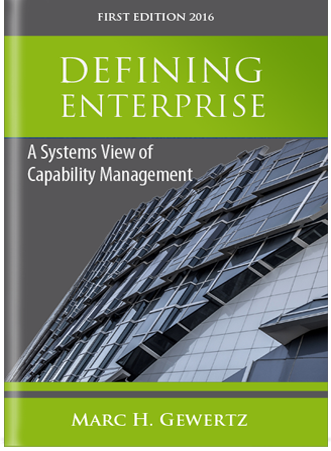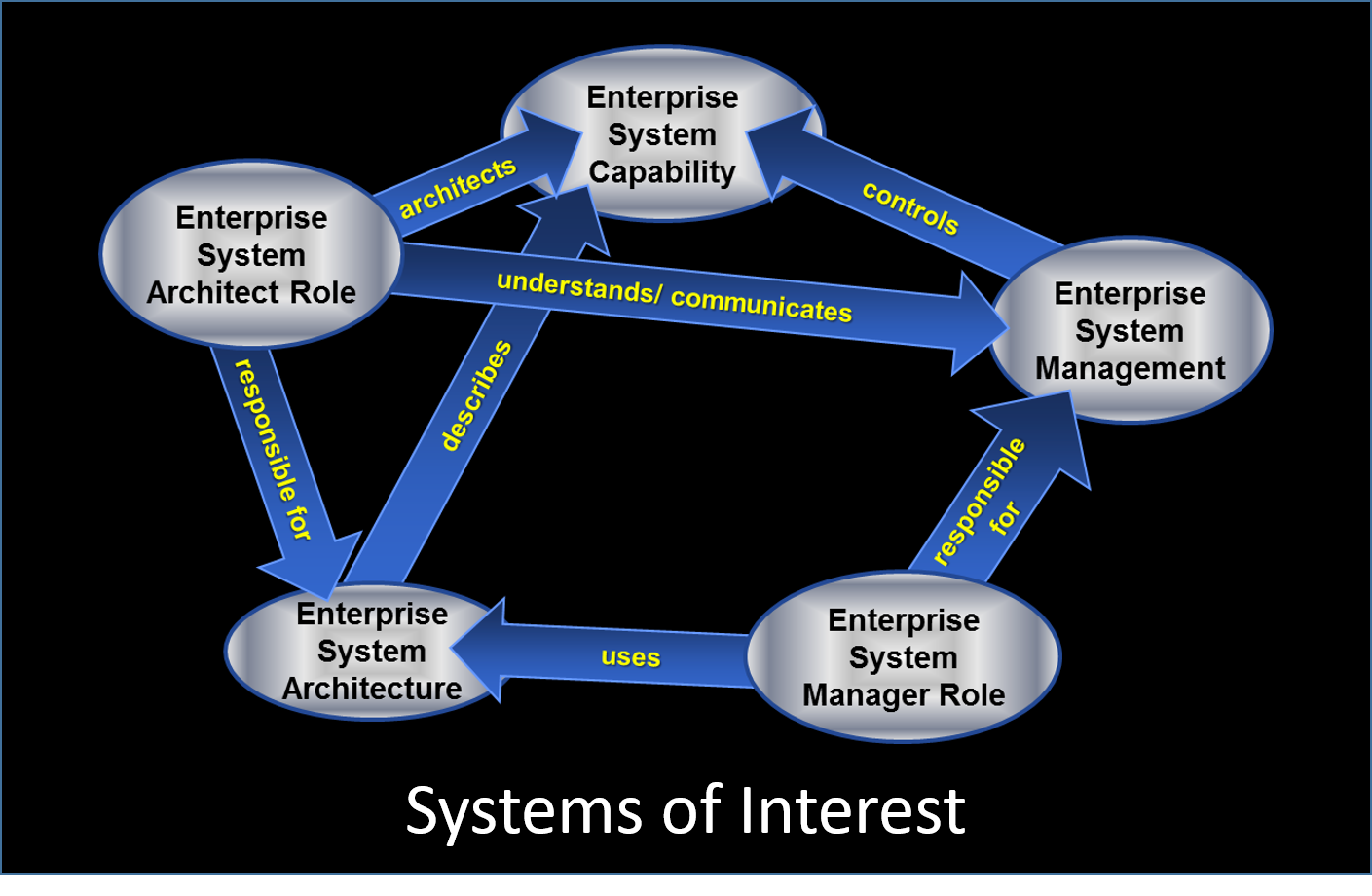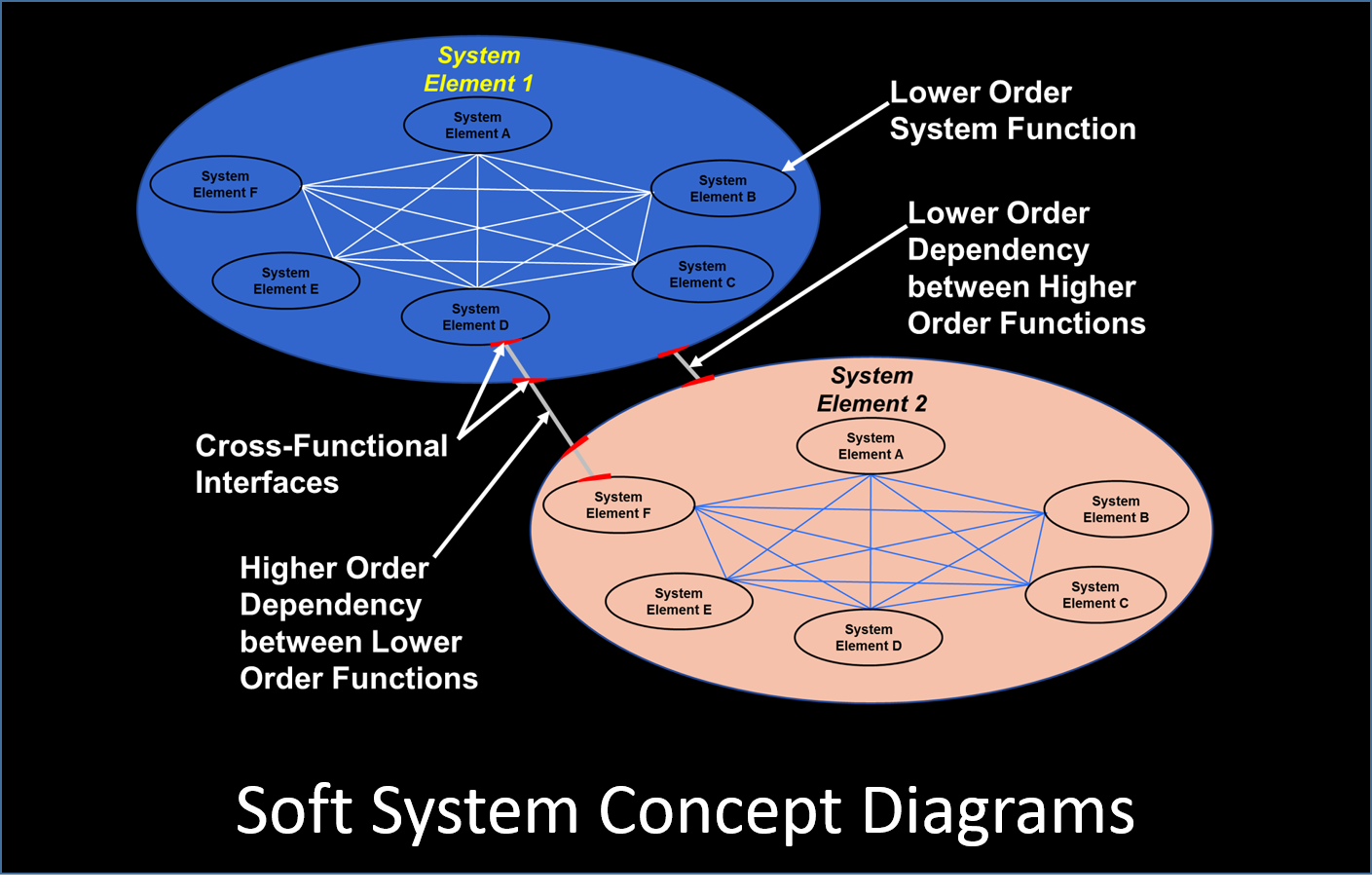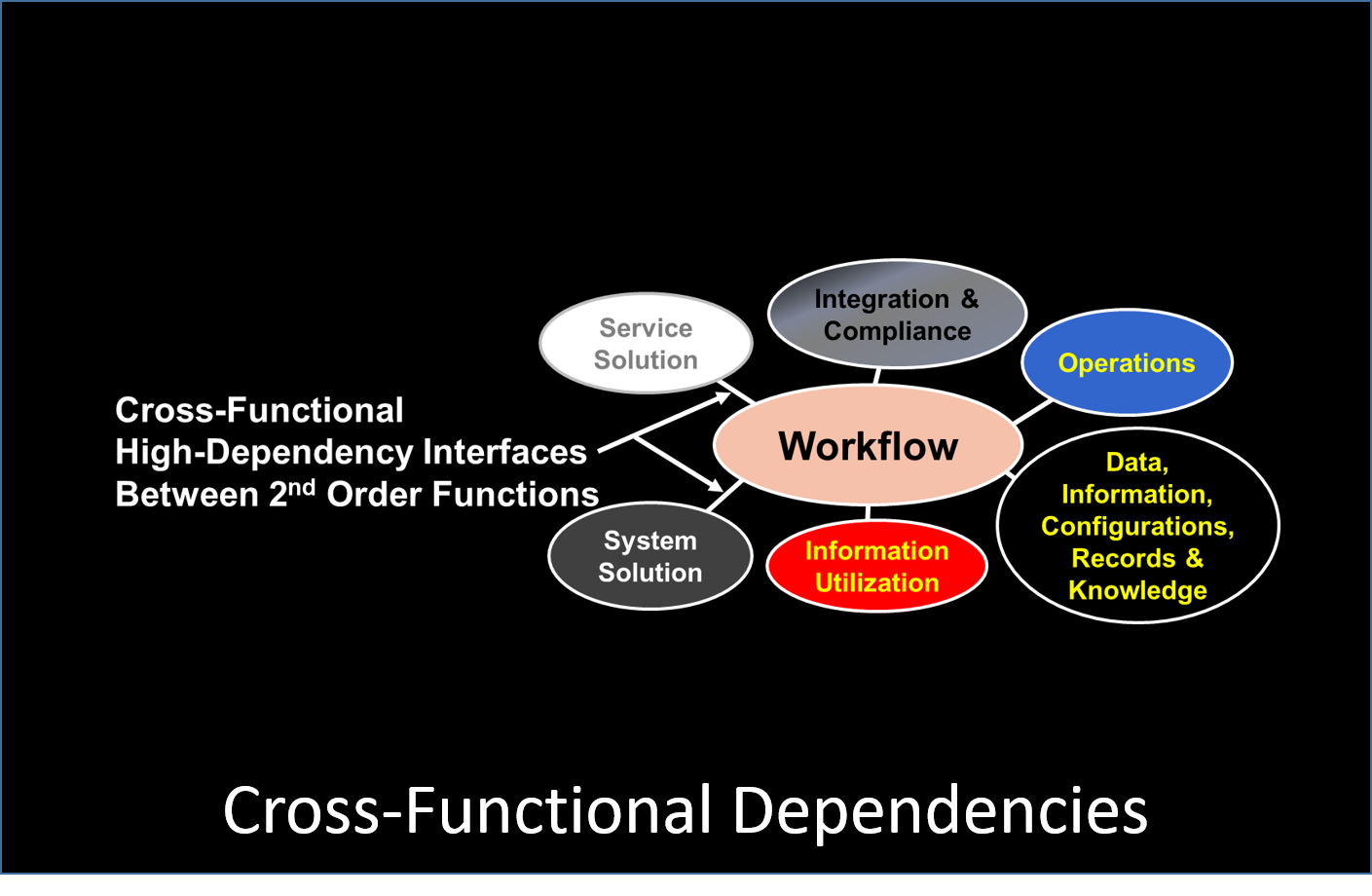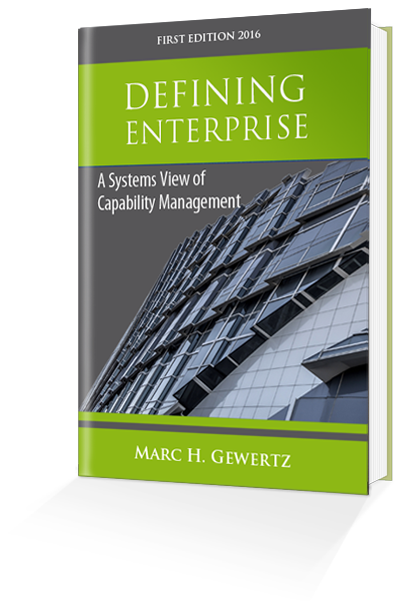The Simple Way To See Everything
About Whole-Enterprise EA
Whole-Enterprise Enterprise Architecture (EA) is holistically practiced over the whole enterprise and throughout the full transformation lifecycle. Activities extend past architectural design into the cross-functional reality of architectural change during detailed design and implementation, through the architectural adjustments needed to get through integration, verification and deployment, out to the architectural transformations needed to sustain operations and beyond.
An architecture for business transformation along with management analysis and planning with costs, schedules, risks and opportunities is only the beginning of a business transformation journey. Adjustments in the architecture and management analysis and planning are required all along the journey. An architectural design which is difficult to realize, maintain, adjust, change, improve, upgrade, replace or sustain is not a good design. An enterprise has to be architected and managed for realization where the reality of the ability to realize and sustain the enterprise must be foreseen and addressed proactively. Just as “throw it over the wall” engineering was ended through integrated team work, "Defining Enterprise" provides the foundational definition to bring “throw it over the wall” business transformation to an end. The next generation EA team is an organized and integrated team of executives, managers and architects with the ability to understand and communicate how everyone and everything fits into the “big picture”.Professional Reviews
"Defining Enterprise" is not the typical enterprise architecture book helping a programmer find their way up the management ladder. Rather, "Defining Enterprise" lays out practical strategies and tactics for architecting for management purposes -- that is, designing -- the business from the perspective of capabilities and intended outcomes.
Marc has chosen a different approach to describing EA, describing management mechanisms and roles as a means to understand how the actions described in an architecture work to create success. He starts with basic building blocks; an approach I truly appreciate. Defining what it is you expect to do to satisfy customer requirements makes eminent sense. In aligning management mechanisms and roles, Marc has given the rest of us a reason for architecture development.
Marc provides an approach and a reference point for any EA, any Executive or any Enterprise Change Professional to assess their own conception, practice or interaction with those involved in managing and architecting enterprises (or parts thereof) such that they can self-assess their own knowledge and capability gaps. In this manner, Marc opens a new door to the shaping of the future of EA and hence the future of enterprises
A foundational piece of work that allows any organisation to be described in a coherent and consistent manner. What's more, the relationships between these "building blocks" of the enterprise are clearly defined, allowing these interactions and dependencies to be easily seen and understood.
This book deserves to be read by anyone with a need to understand how to describe the way their organization works. It gives a sound structural basis on which to figure out what is going on in their normal operating environment and all by itself is the reason I am recommending this work. Most definitely to be included in my reading list and to be recommended to others.”
I found Marc’s way of applying the systems approach for enterprises very reasonable and, I believe, that this book really advances the whole enterprise architecture world towards establishing a commonly understood methodology for a multi-dimensional and actionable architectural definition of an enterprise. Now enterprise architecture has a good chance of becoming an applied science soon.”
I could not recommend this book more. Marc shows not only a way to look at enterprise solutions in the context of a system view but also ways to bring all of that together into a logical easily recreated process for building out the views and viewpoints where software architectures live. Marc’s structured approach that allows unstructured and structured data to flow through the enterprise, is beyond amazing
I recommend this book to all E-Architects and those who manage an enterprise because it is full of valuable insights about how to differentiate the various aspects of creating and managing enterprises, while improving processes and services, or capabilities. It also make it understood the value of being able to architect the enterprise. I particularly appreciate the articulation of major management roles and functions including the integrated aspects of the E-architect.
My organization grew organically by changes created from the bottom of the organisation. I clearly see the book is of tremendous help for such organisations as a navigation tool to grasp the scope of changes to address. I highly recommend managers, architects and others in leading roles to embrace this view. It has helped me a lot to get better dialogues with many of my colleagues.Read Their Full Reviews
About The Book
-
An Enterprise as a System
Looking at an enterprise as a system reveals a totally holistic and fully integrated view of an enterprise, its people, processes, information and technologies.
As a system, the enterprise can be seen as it operates in the market environment to successfully deliver on its mission and satisfy its customers and stakeholders. With the mission and goals of the enterprise system driving the focus of interest within, the basic and fundamental needs of the enterprise drive the basic and fundamental capabilities to differentiate into broad and distinct, high-level categories, based on what the capabilities are intended to do (their functionality) and the purpose they serve (their goal). This enables and assures identifying the activities (‘the workings’) and work products (‘the results’) associated with the basic and fundamental capabilities the enterprise needs and the ultimate results the enterprise expects. This process-oriented mission-centric view of an enterprise supports governance of the enterprise, enabling and enhancing operations, management and control. -
Capabilities and Abilities
Capabilities are aspirational, structured things to be expected, things which are needed and can be planned. Capabilities are requirements, a specification of what is desired.
Abilities are actionable, functioning knowledge and experience-based proficiencies and competencies involving people, tools and equipment. Abilities are things which people and technology can do repetitively, have experience performing, and which are, in the context of an enterprise, resources desired by an organization or otherwise needed to realize a capability. Resources are often shared between capabilities causing resource capacity and availability issues during the periods in time when the capabilities are realized and the resources needed must be ready, applied, committed and sufficient to meet the need. Sharing resources drives the need to align and balance all capabilities with their related abilities. To accomplish this their relationships must be established (aligned) and abilities and/or requirements continuously adjusted until the abilities can meet the requirements and satisfy the need for the capabilities (balanced). In this way all capabilities work properly in the best interests of the whole. -
Working and Needs
A business transformation team as with all product, service and need-driven teams, is composed of people with varying functionalities, all working towards serving a common need.
Each specific executive, manager and architect has a set of specific skills, abilities, knowledge and experience related to a specific ‘discipline’, and understands the specifics of the specific functionality which satisfies the need. Each executive, managerial and architectural discipline is assigned to roles with tasks, goals and objectives requiring their skill set. There are ‘working’ interdependencies (‘needs’ for work product inputs and outputs) between the ‘network’ of team members (skill-sets). It is these work product needs which form time-dependent relationships in the flow of this cross-functional work. With roles and associated work products clearly differentiated, a working integration of cross-functional activities is promoted by defining the high-level flow of work and work products of each discipline and the time-phased back-and-forth work product dependencies between team members. -
Information and Insight
Conducting business and executing processes uses and produces information to provide insight into the state, conditions and workings of the business.
Insight is produced and used as input to operational activities and ultimately serves to support executive, management and leadership decision making. Not all information is within the management information system, its usefulness and application also within workers and operational activities. As the quantity of people, process, information, technology and other resources increase, the need to capture, comprehend, recall and apply what is both becoming known and what is already known increases, driving the need to realize an ability to learn, understand, communicate and apply what is explicitly known. Insight-based information management enables and assures data, information, configurations, records and knowledge support knowledge management, enterprise information management, big data, business intelligence and artificial intelligence abilities beyond the intentions, goals and abilities of traditional information management. -
Functional Roles and Responsibilities
Holistic enterprise architecture in its entirety, is not the job of a person. It is the job of a team and each team member has a distinct function (a role) defining what they do.
Without the knowledge of how everyone fits in, and an understanding of expectations and cooperation between team members, the team will not succeed, regardless of the talent of the individuals. The enterprise as a system perspective defines executive, managerial and architectural roles in terms of the functionality they serve so team members can understand what they do regardless of what they are organizationally called, which varies from company-to-company, organization-to-organization and job-to-job. Each executive, manager and architect has interdependencies with other executives, managers and architects and what the others do. With the knowledge of how everyone fits in, and the setting of expectations for the team, it can then organize, synchronize and function to best utilize the talent of the individual team members, maximize workflow, and maintain control with minimal management in ‘out-of-flow’ conditions when adaptability and variance is needed. -
Cross-Functional Dependencies
There are working interdependencies for work products between team members. Work product needs form time-dependent relationships in the flow of cross-functional work.
The lower order a system function is, the more disconnects and interdependencies it has with other systems, and the less it serves the higher order needs of the other systems. All systems serving the common mission of the enterprise demands cross-functional systems be identified, understood, aligned, balanced, managed, controlled and communicated. Needs for agility and affordability demands cross-functional activities be coordinated, cooperative and synchronized further increasing needs for cross-functional communication, understanding and integration. Cross-functional dependencies must be addressed to enable and assure the functionality of all dependent capabilities. Managing and controlling cross-functional dependencies is therefore critical to managing and controlling integrated activities, and in enabling and assuring proper and thorough consideration of changes to capabilities and the resultant impacts and needs on resources and other capabilities.
Enterprise System Diagrams
Addressing the need for a philosophical view of an enterprise in the market environment requires an adjustment in architectural, managerial and executive perspective. Conceptualizing an enterprise from its inception through its performance as an operational entity presents a view of the enterprise as a dynamic system of functionality, serving a common need.
- Systems of Interest
- Soft System Concept Diagrams
- Lifecycle Workflow
- Cross-Functional Dependencies
